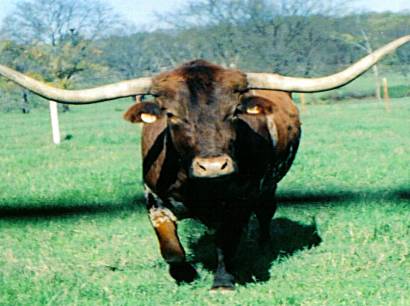This Week's Story
subscribe to podcast [click here] or play audio below
Theobald Smith begins a bizarre trail of discovery after thousands of cattle die mysteriously.

This Week’s Story relives American history and the Bible through brief inspiring stories presented on mp3 audio recordings and text for reading.
Mystery of the Nasty Ticks, part one
“Bud, I’m going under. I can’t make a profit. Hundreds of my cows died on the trains going East. My Texas cows survived, but all the ones from the North died. The Texas fever got them.”
“Walt, something’s wrong with mixing these northern and southern cows. I think it’s got something to do with the ticks that get on them and suck their blood.”
“Well, forget about finding any horse doctor from the State Experiment Stations who will believe you. None of them think an insect can cause a disease.”
As the cattlemen talked, cattle were mysteriously dying in the 1880’s.The U. S. government formed the Bureau of Animal Industry. Four men, one a slow-moving janitor, were to handle research for veterinary and agricultural issues. Epidemics of death were occurring among U.S. pigs, rams, heifers, and bulls. The most pressing need was to solve the mystery of the Texas fever.
The primary hunter of the cattle assassins became Theobald
Smith. He joined the Bureau team. Not Dr. Salmon, Fred Kilborne, or Theobald knew how to find a microbe, a possible animal murderer so small it could be seen only with a microscope.
Microbes were being studied with great excitement by pioneers in Europe in a new science called bacteriology.Theobald read about scientific discoveries by Robert Koch of Germany and Louis Pasteur of France in the worlds of microbes, germs, and bacteria. Theobald had degrees, a B.A. in philosophy and a medical degree, but he wanted to study microbes.
Now he had an on-the-job opportunity with a small budget and a shabby attic room in a government building. There, as cockroaches marched by and sweat covered his body in the steaming summer heat of Washington D.C., Theobald studied the spleens and livers of dead cows. Through his microscope he observed broken blood corpuscles. He realized it was no longer enough to be a scientist in an attic. He needed to study cattle dying in fields. He heard about the cattlemen’s theory of ticks being the killers. The Department of Agriculture gave money so the theory could be researched. Theobald and Fred built an outdoor laboratory, which consisted of six small fenced fields.
In the summer, into Field No. 1 he placed four healthy, but tick-covered cows from the South. He put six healthy tick-free cows from the North with them. He and Fred also set up a new test for Field No. 2. They picked off all the tiny ticks stuck inside cow hair and the big fat blood-gorged ticks on three southern cows and put them into Field No. 2 with four healthy tick-free cows from the North.
All summer Theobald and a bug expert watched ticks travel, marry, and lay strange eggs. Two months passed. Then in Field No.1 the northern cows, once tick-free, began to die. Their blood was like water; their bones stuck out; and fever raged in them. Ticks now energetically sucked and burrowed into them. In Field No. 2, where there were no ticks, all the cows stayed healthy.
From the dying cattle Theobald took blood samples, studied them under a microscope, and declared, “A deadly microbe is in this blood.”
This is Barbara Steiner. In part two we’ll learn the identity of the killer microbe and the impact of its discovery. Don’t forget to check out the website: www.thisweeksstory.com.
<< previous story] [next story >>
We invite your comments! [click here to comment]
This Week's Story is a non-profit supported by listeners. [click here to make a donation]
